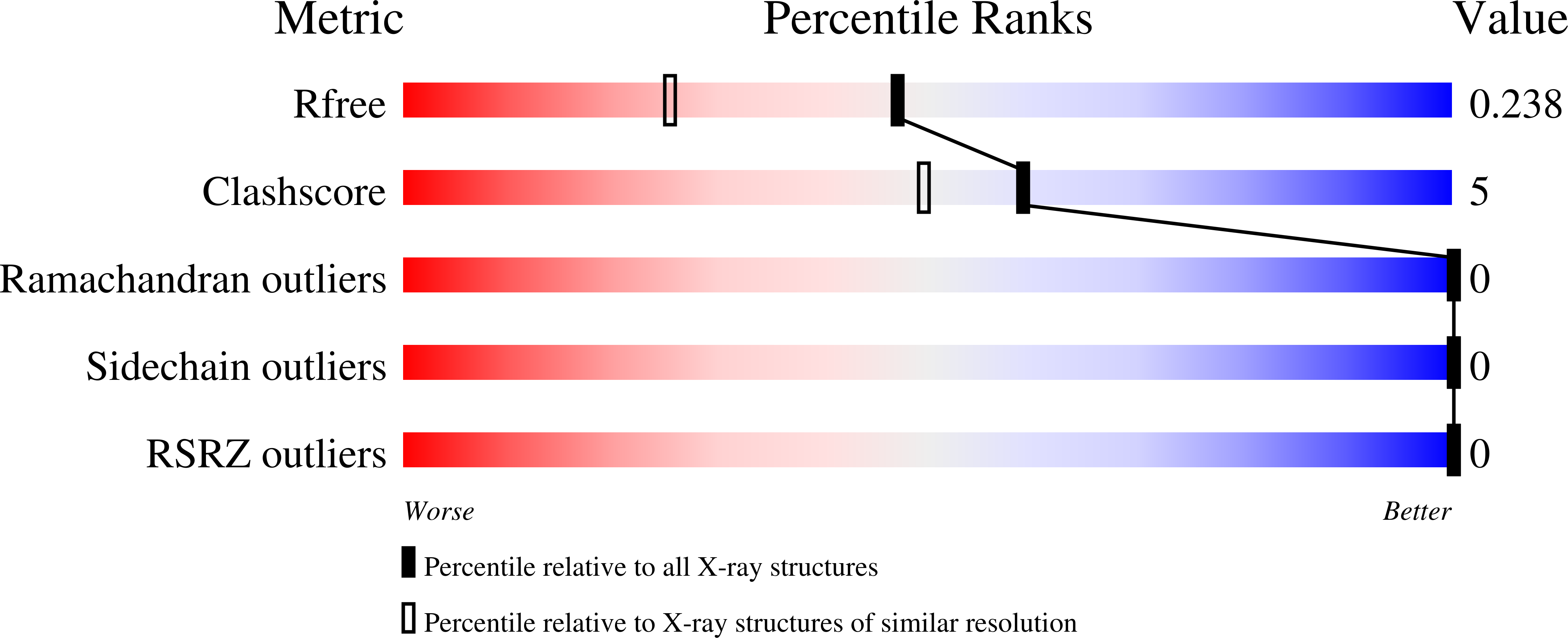Crystal Structure of the F27G AIM2 PYD Mutant and Similarities of Its Self-Association to DED/DED Interactions.
Lu, A., Kabaleeswaran, V., Fu, T., Magupalli, V.G., Wu, H.(2014) J Mol Biol 426: 1420-1427
- PubMed: 24406744
- DOI: https://doi.org/10.1016/j.jmb.2013.12.029
- Primary Citation of Related Structures:
4O7Q - PubMed Abstract:
Absent in melanoma 2 (AIM2) is a cytoplasmic double-stranded DNA sensor involved in innate immunity. It uses its C-terminal HIN domain for recognizing double-stranded DNA and its N-terminal pyrin domain (PYD) for eliciting downstream effects through recruitment and activation of apoptosis-associated Speck-like protein containing CARD (ASC). ASC in turn recruits caspase-1 and/or caspase-11 to form the AIM2 inflammasome. The activated caspases process proinflammatory cytokines IL-1β and IL-18 and induce the inflammatory form of cell death pyroptosis. Here we show that AIM PYD (AIM2(PYD)) self-oligomerizes. We notice significant sequence homology of AIM2(PYD) with the hydrophobic patches of death effector domain (DED)-containing proteins and confirm that mutations on these residues disrupt AIM2(PYD) self-association. The crystal structure at 1.82Å resolution of such a mutant, F27G of AIM2(PYD), shows the canonical six-helix (H1-H6) bundle fold in the death domain superfamily. In contrast to the wild-type AIM2(PYD) structure crystallized in fusion with the large maltose-binding protein tag, the H2-H3 region of the AIM2(PYD) F27G is well defined with low B-factors. Structural analysis shows that the conserved hydrophobic patches engage in a type I interaction that has been observed in DED/DED and other death domain superfamily interactions. While previous mutagenesis studies of PYDs point to the involvement of charged interactions, our results reveal the importance of hydrophobic interactions in the same interfaces. These centrally localized hydrophobic residues within fairly charged patches may form the hot spots in AIM2(PYD) self-association and may represent a common mode of PYD/PYD interactions in general.
Organizational Affiliation:
Department of Biological Chemistry and Molecular Pharmacology, Harvard Medical School, Program in Cellular and Molecular Medicine, Boston Children's Hospital, Boston, MA 02115, USA.














